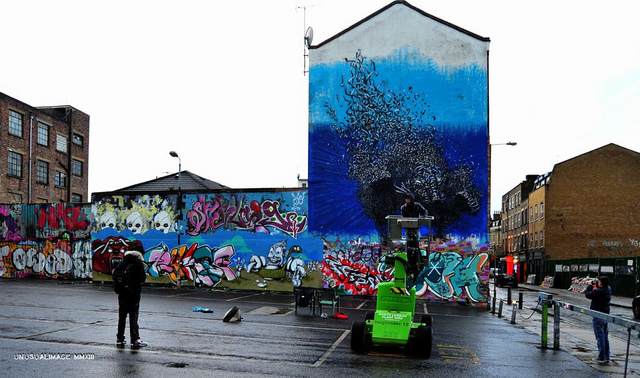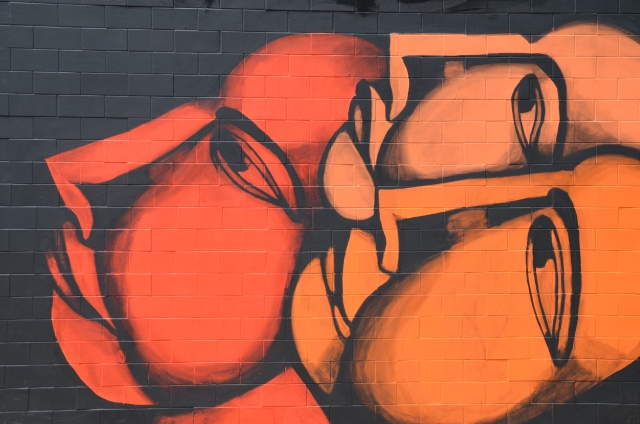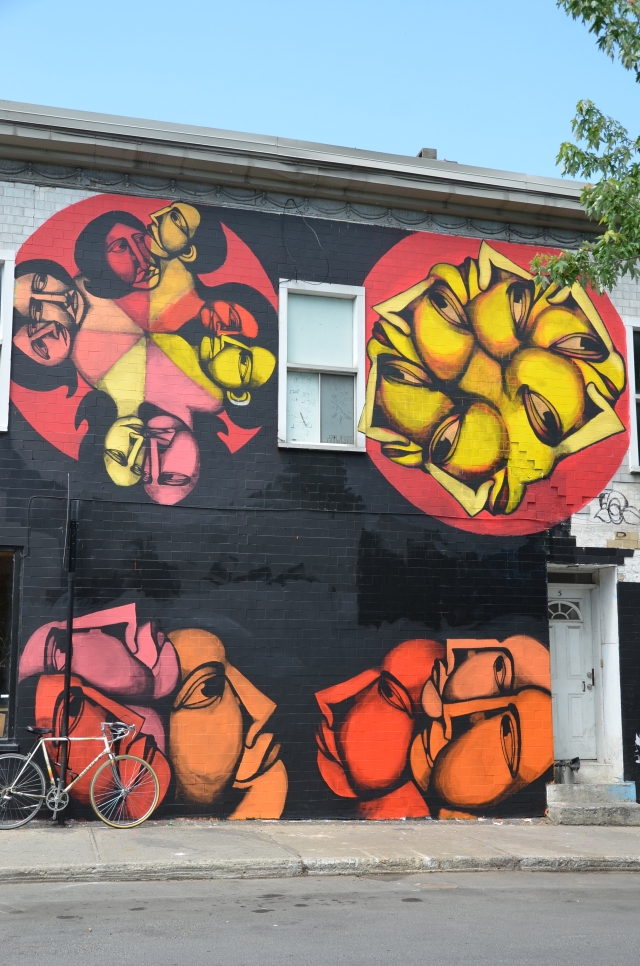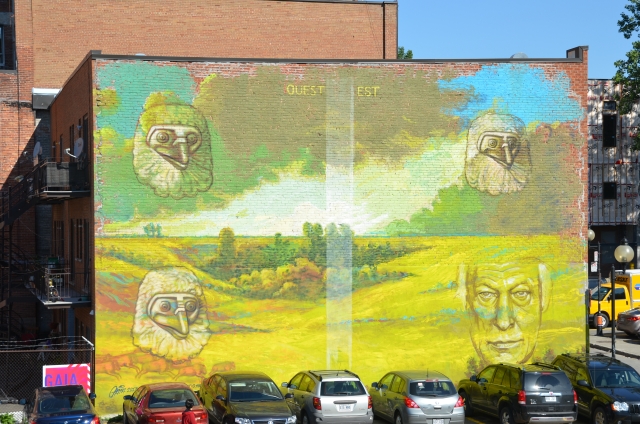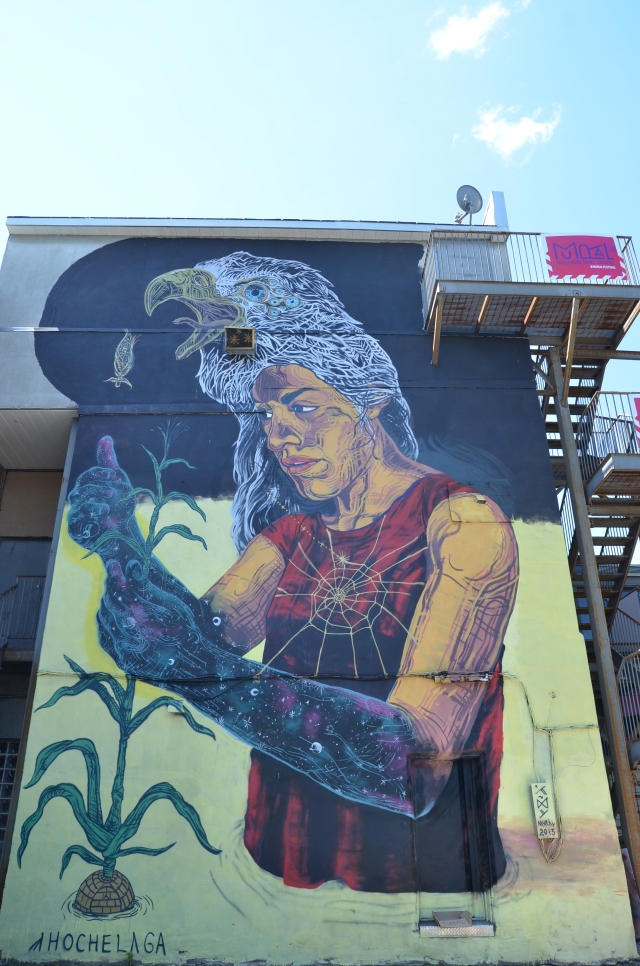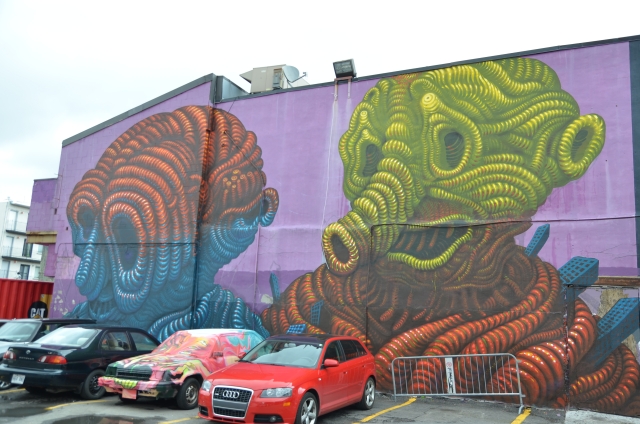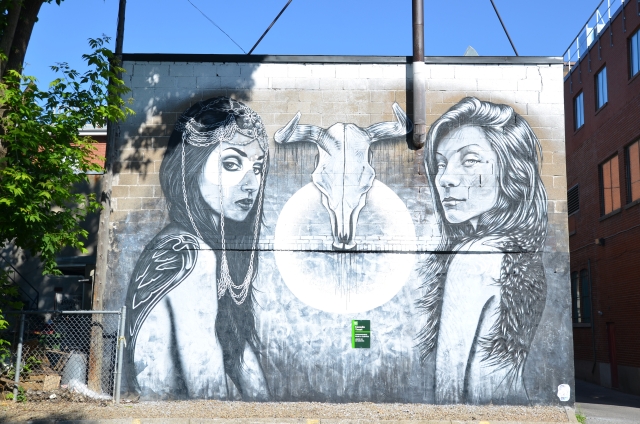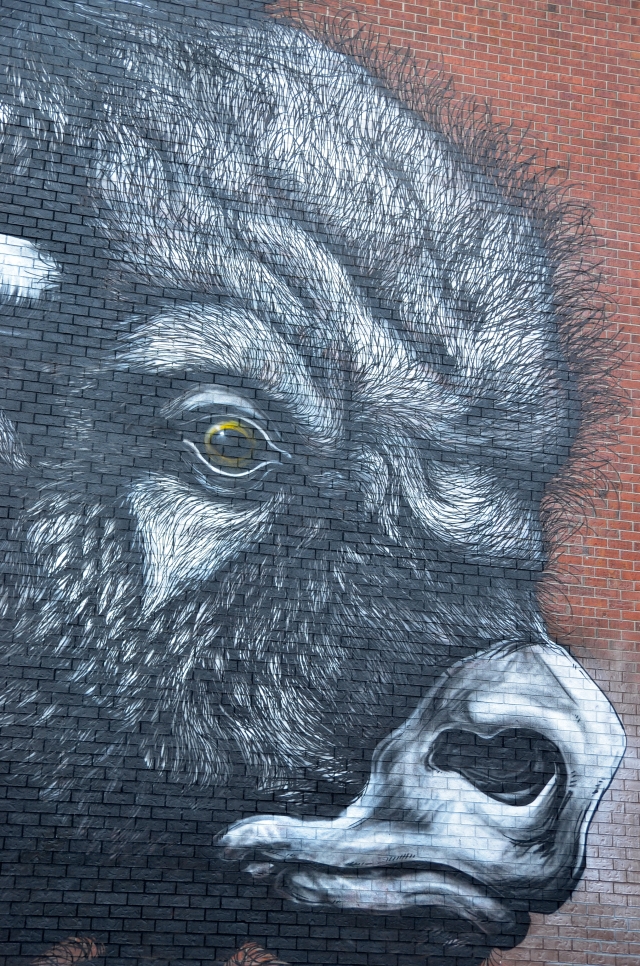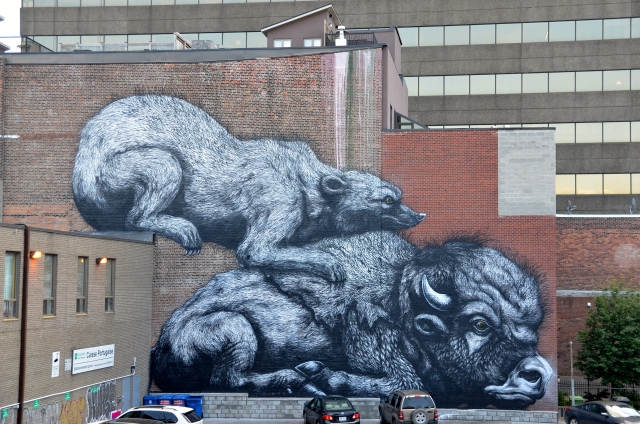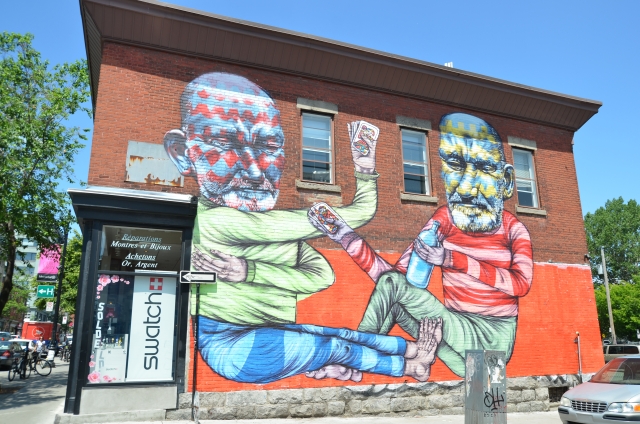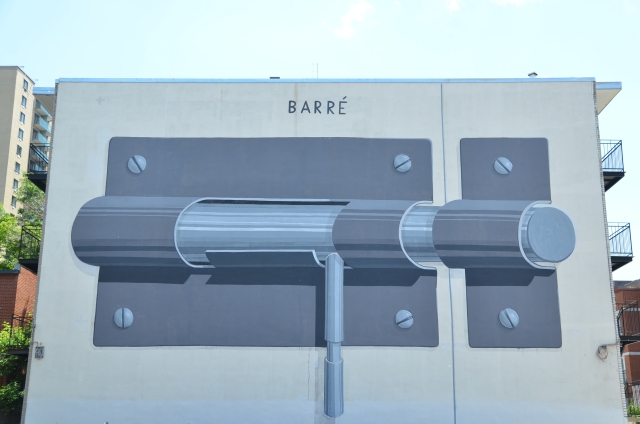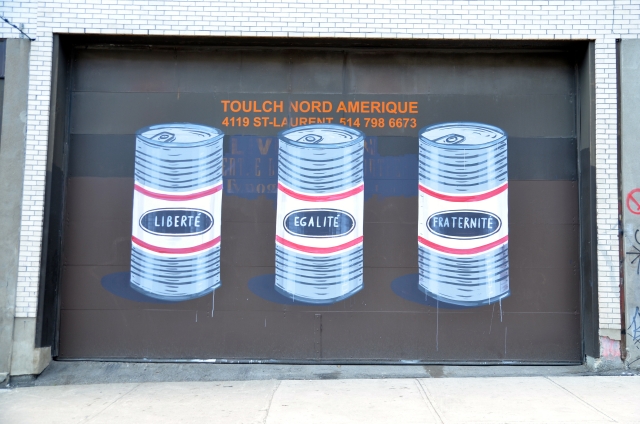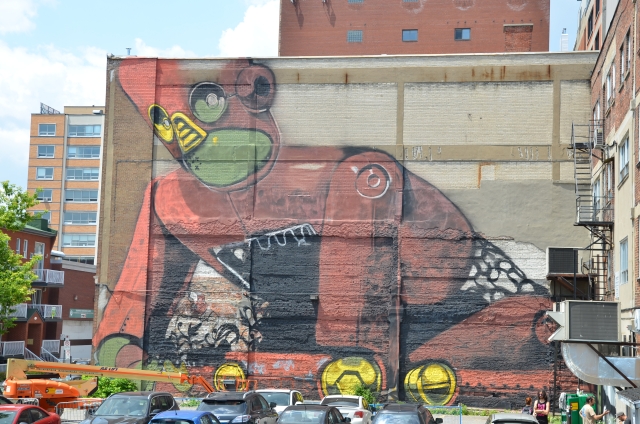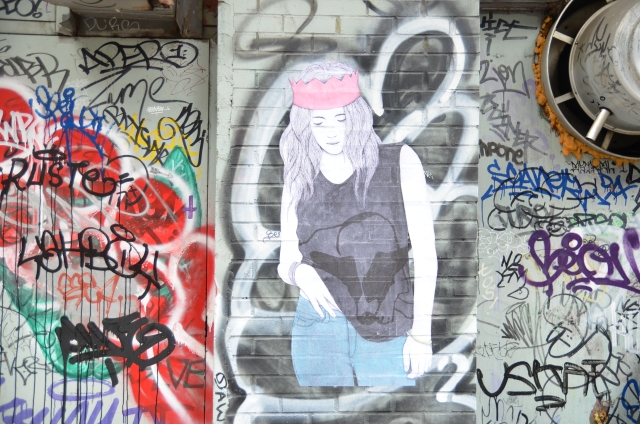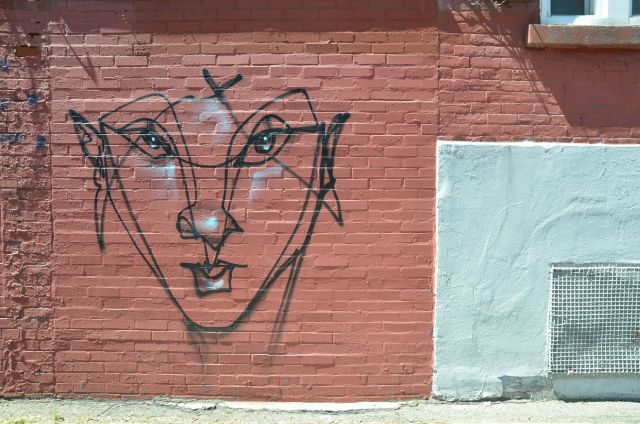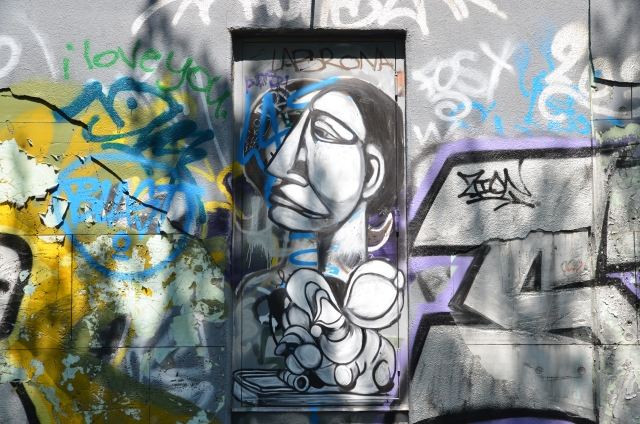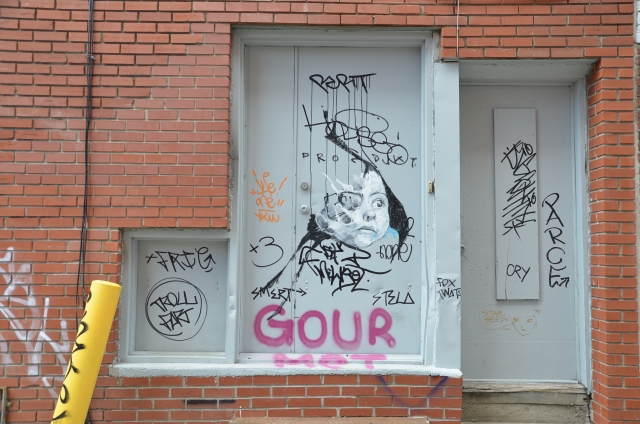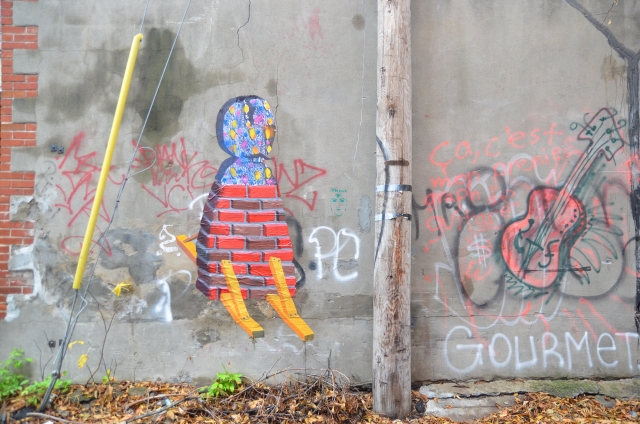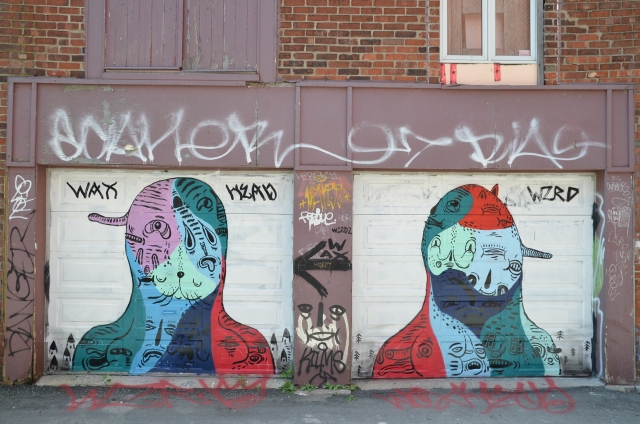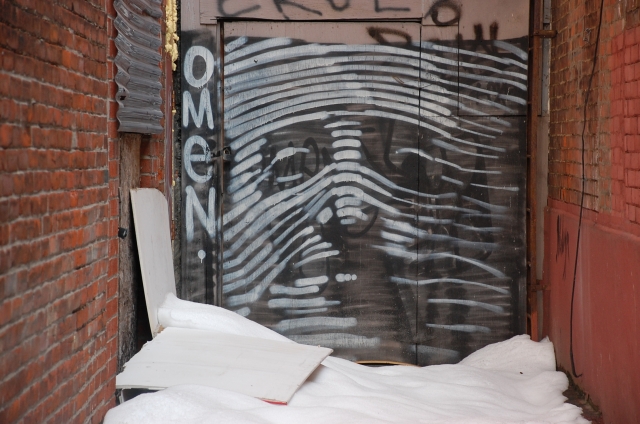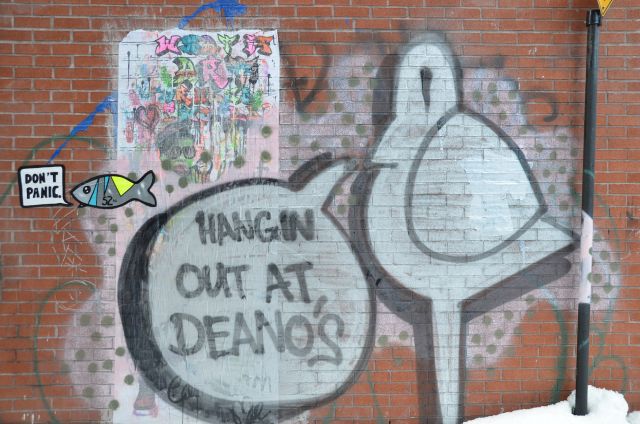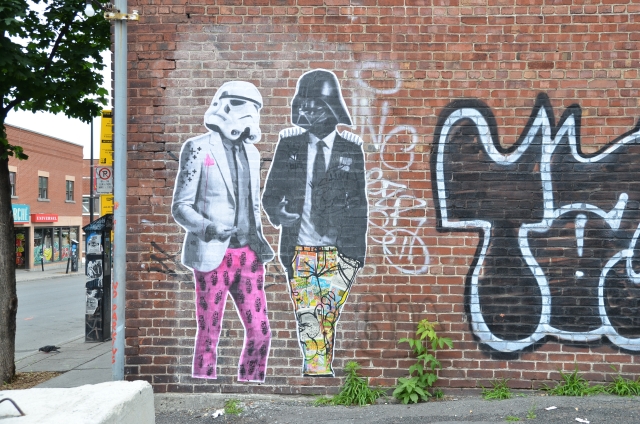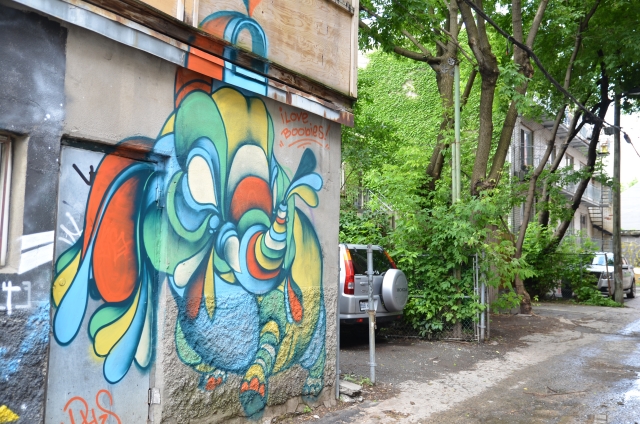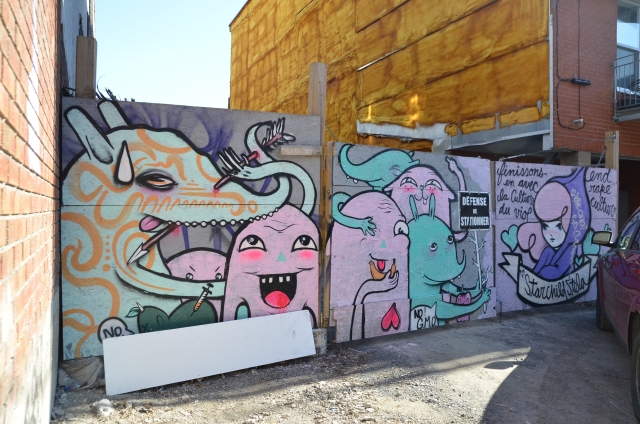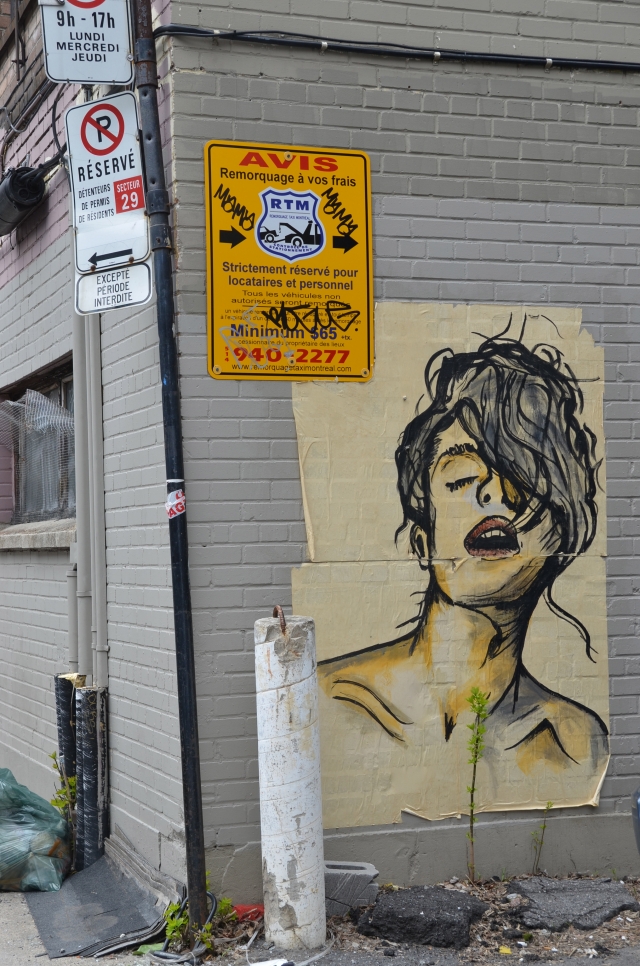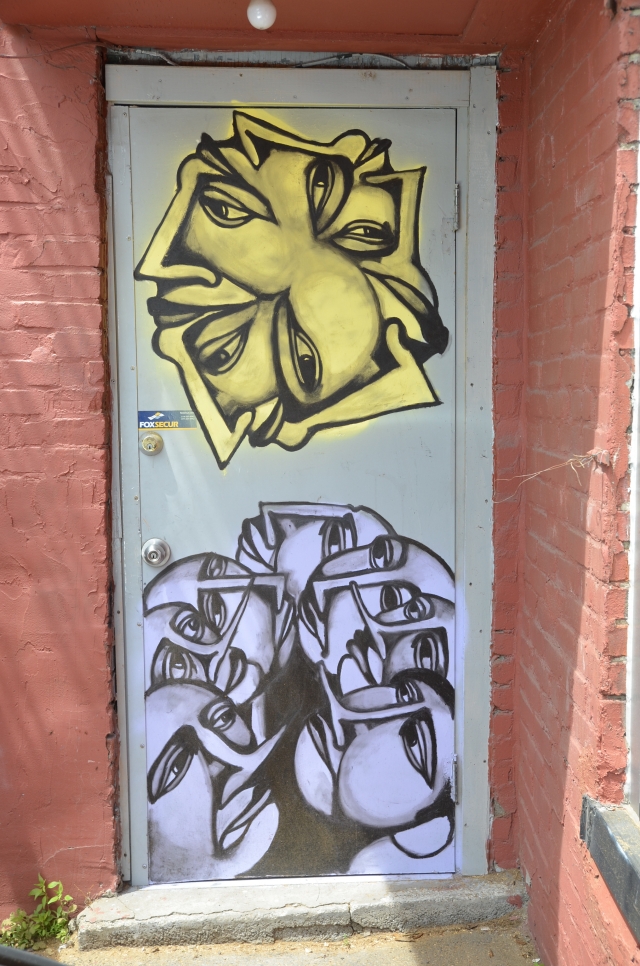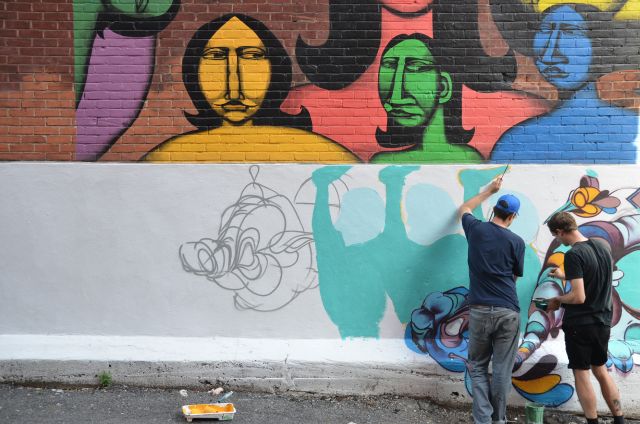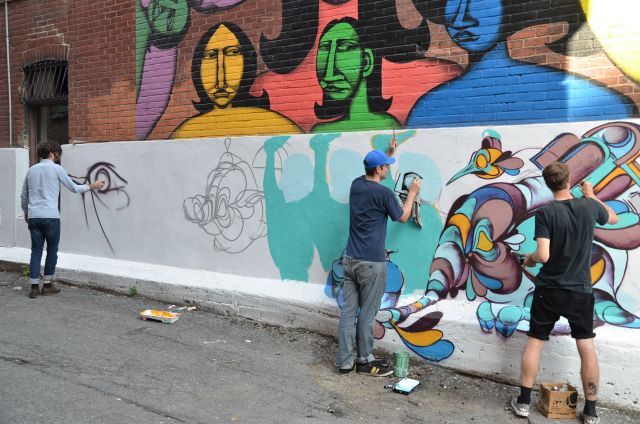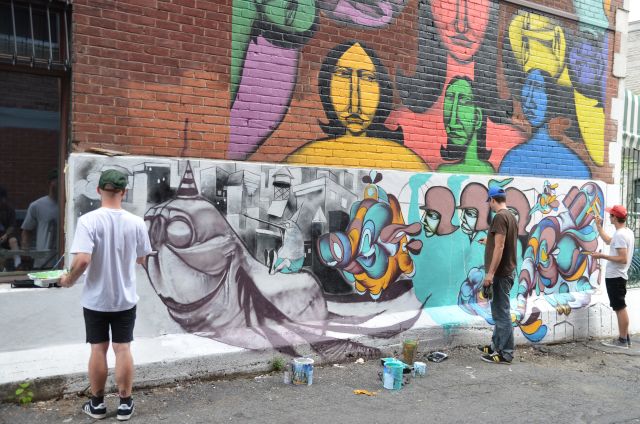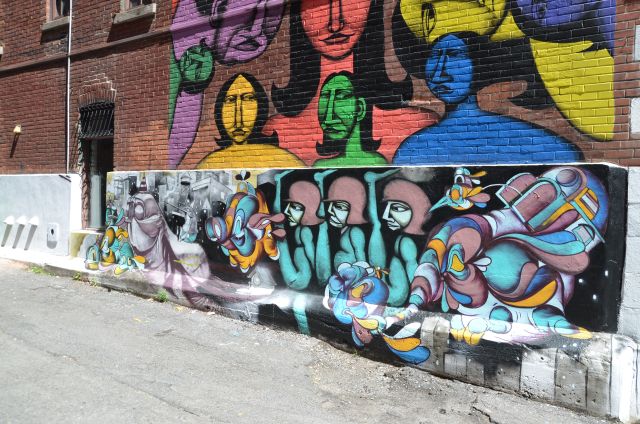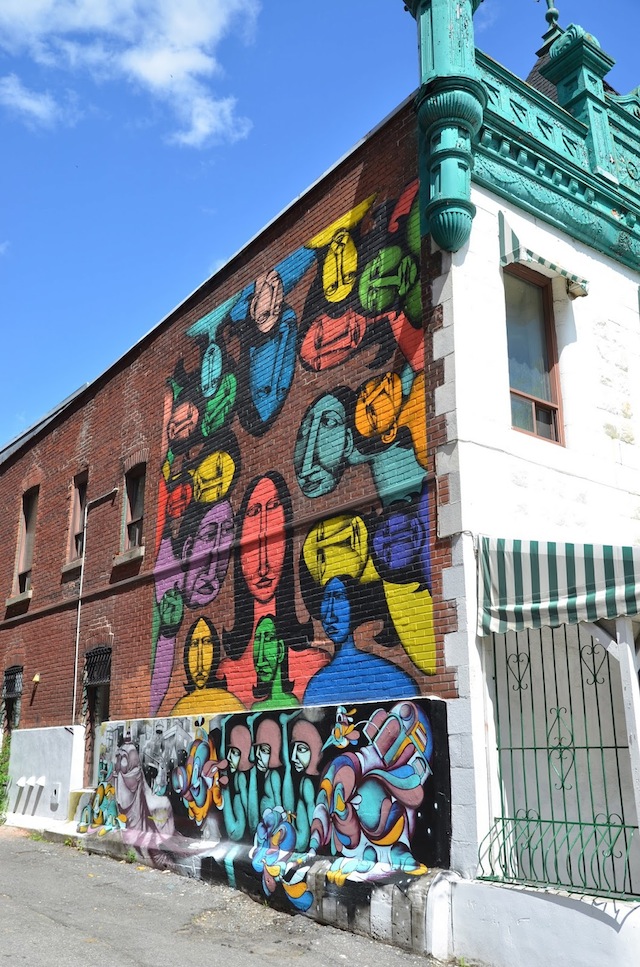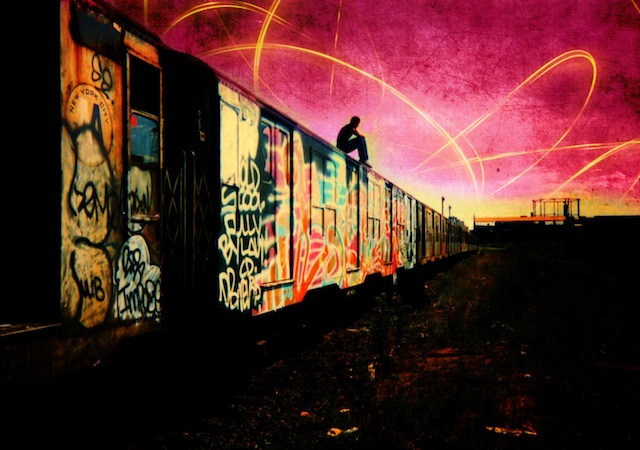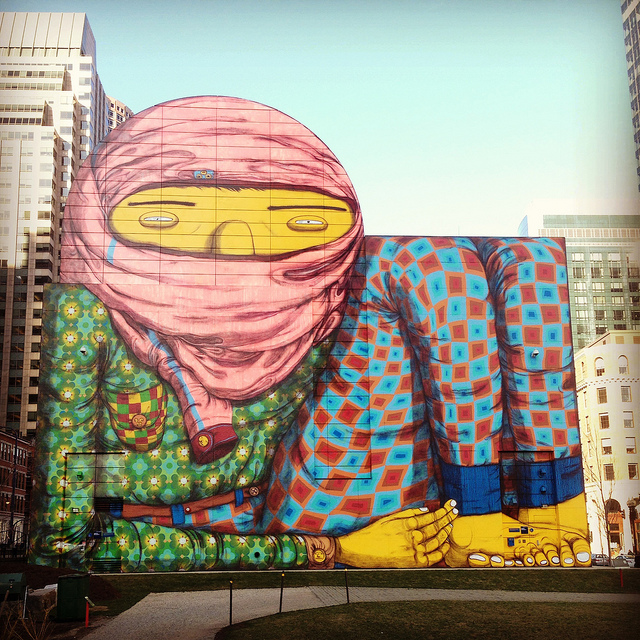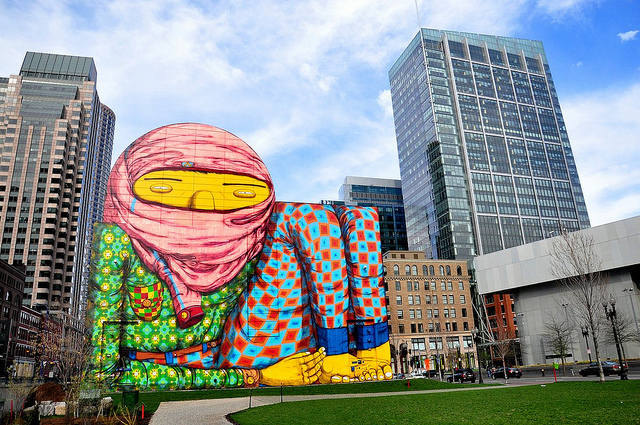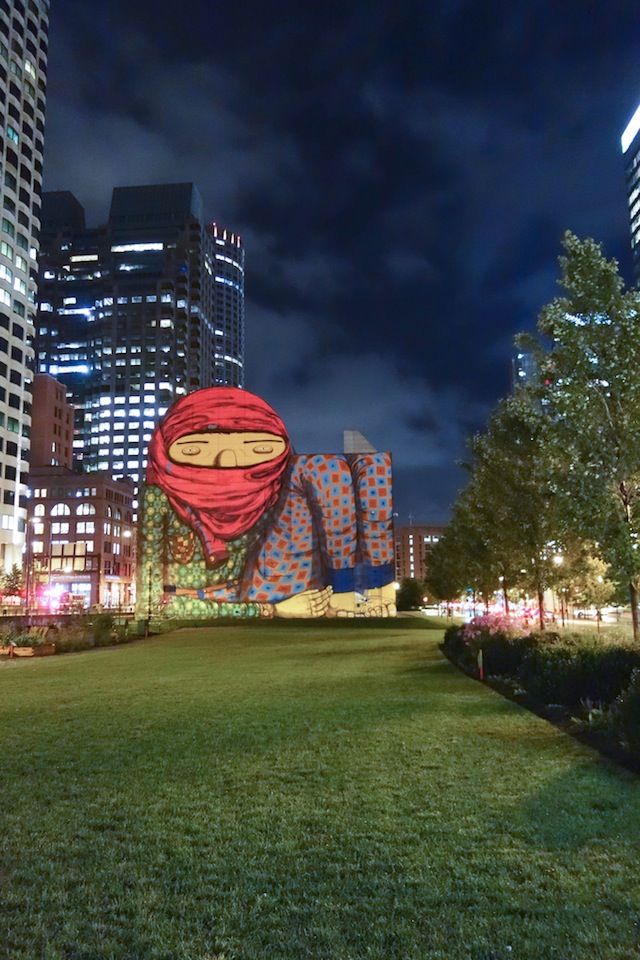
Robbie Conal was one of the first artists that Tim Hans met up with for his series of portraits of artists, and Robbie suggested that Tim also photograph MearOne. Since I am mostly aware of MearOne’s work through Robbie, we asked Robbie to interview MearOne for us. – RJ
Robbie Conal: I know Mear One as a whirling dervish. Painting, drawing, piecing, print making, poster production, T shirt lines, stickers and everything else I forgot to list. Always up to making and thinking about more things than I can even get my mind around. (In fact, after writing those 3 sentences—conjuring the Mearski—I think I need a nap.) So….I figure you must be hooked into world history and current events, like you have a social media I.V. drip going directly into your brain 24/7. Or, perhaps you even consume information the good old, old fashioned way…like, have you read any good books, lately?
MearOne: I haven’t found the time to read any books this past year but the years prior I was on a bit of a reading binge. I studied world history and human psychology from the writings of philosophers like Richard Tarnas, Robert Anton Wilson, Ken Wilber, and I enjoy reference books that explore the mind and place of humanity in reality. I have always enjoyed cryptic Scientific, Philosophical, and Spiritual literature from the late 1880’s through the 1940’s. My family has roots in Art, Music, Astro Physics, and this seems to be a very interesting time in the subject matter that inspires me. I enjoy Anthropology and Archeology too – as an artist I can find an endless story to create and build upon, one you don’t find in traditional public school teachings.

RC: Of course I’m interested in your reception habits and preferred sources of information, but I want to ask you about your big pieces about big subjects—you make more of them than pretty much any street artist I know. How do you choose a subject to do a big “piece” about—like not necessarily doing a commission, but something more on your own.
M: For the work I create, my personal views and understanding of politics and humanity are worked into a extreme story that I can create to illustrate the issues that desperately need to be discussed. I search for truth to interpret this world that is insane. There seems to be a secret side of life that the average, complacent American victim has no idea about, and is partially responsible for. I believe the powers that be are mindlessly manipulating society to satisfy our addiction to greed and power. There are deeper levels of secret organization who are invested in harming upon the uninitiated and poor worldwide.
RC: Also, how did you develop (or evolve) your major pictorial form—the one (or 2 or 3) you use for the big pieces? (Which seems to me like a contemporary melding of classic social & political muralists’ heroic populist representation, teeming with images, use of deep illusionistic space and cracking open Pandora’s Box just enough to let loose some spiritualized microcosmic sci-fi galaxy spinning.)
M: My subject matter stems from what is happening right now and sometimes incorporates the past but shows how they are linked and perpetuated. My paintings are philosophical perspectives on reality and I use real world current issues, juxtaposed with ancient myth, symbolism and my own imagination of the future in order to express a multidimensional way of conceiving of life responsibly and artistically. This is my way of looking into larger fields of time and how the human experience plays itself out. In addition, my work speaks about the unheard and lesser known ideas surrounding our culture like Social Conditioning, Political Power, The Higher Self Psychology, and The Material and Non-Material universe. I use current issues to discover their connection to past events and draft out a diagram of how time may be more akin to something like a four dimensional spherical reality as opposed to linear. There is something happening here and I want to know. There is a saying that goes something like, “If you long for ease and comfort than settle for it, but if your quest is for truth than you must search, and search you will.” And so here I am searching through my work to find what is true.

Photos by Tim Hans

